Annalisa Christie
Cowrie Shells: An Early Global Commodity Project: Postdoctoral Researcher
BA Archaeology (2006) UCL; Graduate Attachee (2006) British Institute in Eastern Africa, Kenya; MA African Archaeology (2007) UCL; PhD Archaeology (2011) University of York; Marine Archaeologist (2013 – 2015), UHI.
Research Interests
Maritime Archaeology; Archaeomalacology; Island Archaeology; The social context of maritime practices; Archaeological expressions of maritime identities; Indian Ocean maritime trade networks; Social values of landscape and material culture; Marine geophysics; History and archaeology of the submerged remains from the First and Second World Wars.
Current Research
I am currently working as the Postdoctoral Research Assistant on the Leverhulme-funded Cowrie Shells: an Early Global Commodity project led by Dr Anne Haour, SRU, with Professor Alastair Grant, School of Environmental Studies, UEA, as a Co-Investigator. Although cowrie shells, Cypraea annulus and Cypraea moneta, an Indo-Pacific species, are widely recorded across the West African archaeological record from a variety of contexts from the mid-first millennium and imbued with a variety of social values, no synthetic attempt has been made to standardise their classification, to determine how and where they were sourced, and the social implications of this on communities at the supposed production end of the exchange (the Maldives); to understand their movement around the Indian Ocean; or to explore how and why they came to have such an important place within West African societies.
My role on the project will be two fold – first will be to clarify the taxonomic classification of Cypraea annulus and Cypraea moneta, based on collections from archaeological, museological and ethnographic contexts. This will be done in tandem with testing various scientific methods to determine where the shells were being sourced.
Second, I plan to focus on the nature and impact of the exploitation in the Maldives using an anthropologically-informed maritime approach to explore how the exploitation was organised and undertaken, how and where the shells were processed, how their trade was controlled, and how these factors shaped and were influenced by the social dynamic of Maldivian communities more broadly. These questions will be examined in the context of Maldivian maritime practices more generally, exploring how cowrie shell exploitation fitted within the broader maritime and island landscape. For example, how does cowrie shell fishing compare with other fishing activities; is cowrie collection and production associated with particular atolls and if so why were these atolls preferred, how were the cowries moved between atoll and what were the occupants of those atolls receiving in return; is there any evidence to suggest that access to cowrie collection areas was restricted, and if so, what factors motivated this and how was this controlled?
This work complements my earlier doctoral research, during which I explored marine resource use and maritime practices in the Mafia Archipelago, Tanzania. Setting the two archipelagos side by side provides an important comparative perspective which offers valuable prospects for a wider understanding of maritime communities now and in the past.
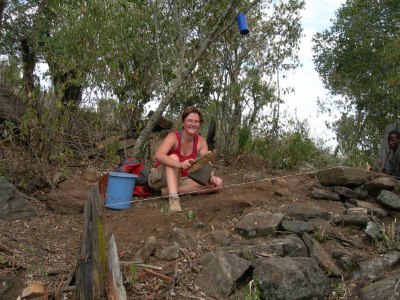
Excavating a cairn site at the Laikipia Plateau, Kenya
During my doctoral research I examined the exploitation of marine resources in Mafia from a socio-economic perspective using an ethno-archaeological approach. To facilitate this I completed ethnographic surveys, conducting interviews with fishers and shellfishers to understand the social dynamics of these activities, and to explore what factors influence the selection of particular marine resources.
Following the completion of my PhD, I assisted in further fieldwork in the archipelago as part of the Sealinks project. This provided an opportunity to conduct further ethnographic work to look at other, non-subsistence uses of shellfish. In particular I was interested in how shells, collected from the beach, were used as toys. Building on this work I am currently working on a paper that explores the use of shell toys as a means of elucidating the archaeology of childhood. I’m hoping to identify other examples of shell toy use while in the Maldives, providing scope to develop a project looking at shell toys in archaeological contexts in the future.
Prior to my appointment at UEA I worked as the marine archaeologist at the University of the Highlands and Islands, completing a number of commercial and research projects. Amongst these, I organised and undertook fieldwork for the Historic Scotland (now Historic Environment Scotland) Funded Scapa Flow 2013 Marine Archaeology Survey contributing to the national strategy for monitoring and managing submerged cultural heritage in Scotland. These surveys aimed to identify and record the character and condition of several of the lesser known wartime remains in Scapa Flow using side scan sonar and diver ground-truthing to assess the remains. The outcomes of these surveys were published on the www.scapaflowwrecks.com website, helping to ensure the legacy of the HLF funded Scapa Flow Landscape Partnership project. As marine archaeologist, I also chaired the Orkney Marine Archaeology Forum, and was vice chair of the Orkney Historic Boat Society.
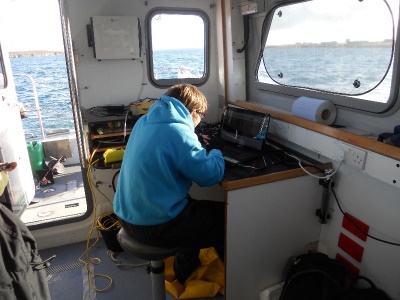
Conducting side scan sonar surveys of wartime heritage in Scapa Flow, Orkney
While in Orkney I was module leader for a fourth-year module ‘Marine Archaeology and Heritage of Northern Scotland’ module. I also organised and helped deliver a number of Nautical Archaeology Society (NAS) courses including the development of three new Part III courses in Side Scan Sonar, Remote Operated Vehicle and Geographic Information Systems. Although I will be stepping down as a trustee of the NAS in November 2015 after six years on the committee, I continue to support the society as a tutor and member.
I am currently co-coordinator of the ArchaeoMalacology Working Group, and editor of their biannual newsletter. In this capacity I am organising the group’s next meeting ‘Methods in our Madness: Approaches in Archaeomalacology’, which will be held in Orkney in April 2016 in conjunction with the Association for Environmental Archaeology spring conference and the Professional Zooarchaeology group meeting. The meeting will showcase ongoing archaeomalacological research from East Africa, India, the Near East, Europe and the North Sea, amongst others.
Current publications
Forthcoming:
With Heath K., Littlewood M and Robertson, P., Archaeological surveys of anti-torpedo close protection pontoons: recent research in Scapa Flow. (In press).2015
With: Fleisher J., Lane P., LaViolette A., et al. When did the Swahili become maritime?. American Anthropologist 117 (1): 100-115.
2013
Refining the chronology of Kua Ruins: - Recent radiocarbon dates from the Mafia Archipelago, Tanzania. Azania 48 (3): 1-13.
Exploring the social context of maritime exploitation along the East African coast from the 12th – 18th c. AD: Recent Research in the Mafia Archipelago, Tanzania. In R Ono, D Addison and A Morrison (eds) Prehistoric Marine Resource Use in the Indo-Pacific Regions. Terra Australis 39. Australia National University E-Press: Canberra: 97-122
An Overview of work conducted in the Mafia Archipelago 2008 – 2010. Nyama Akuma 79: 30 - 44.
2012
Is maritime ethnography a useful approach for interpreting maritime societies in the archaeological record?’ In Henderson J (ed) Beyond Boundaries: Proceedings of the International Congress in Maritime Archaeology (IKUWA Conference), London 2008. Römisch Germanische Kommission (RGK) Publishers and NAS; Frankfurt and Portsmouth: 221-226.
2010
Were the communities living on the East African coast also ‘Maritime’ Communities? An Archaeological Perspective. In C Horrell and M Damour (eds) ACUA Underwater Archaeology Proceedings 2010: Advisory Council on Underwater Archaeology Publication.
Faunal Assemblages as Proxy Indicators for Fishing Technologies, Boat Typologies and Social Organization: Recent Research in the Mafia Archipelago, Tanzania: Nautical Archaeology Summer 2010: 11.
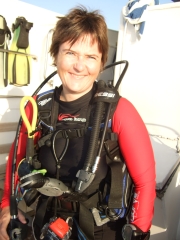
Annalisa Christie. Postdoctoral Researcher. Cowrie Shells project
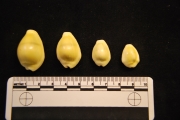
Cypraea moneta specimens, Natural History Museum London collection
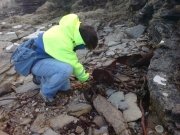
Recording the wreckage of WWII Anti-torpedo Close Protection Pontoons at Hoxa Head, Orkney
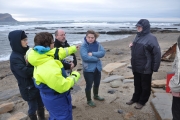
Briefing students on the the Nautical Archaeology Society Intro/P1 training course, at the wreck of the Norholmen, Warbeth, Orkney

